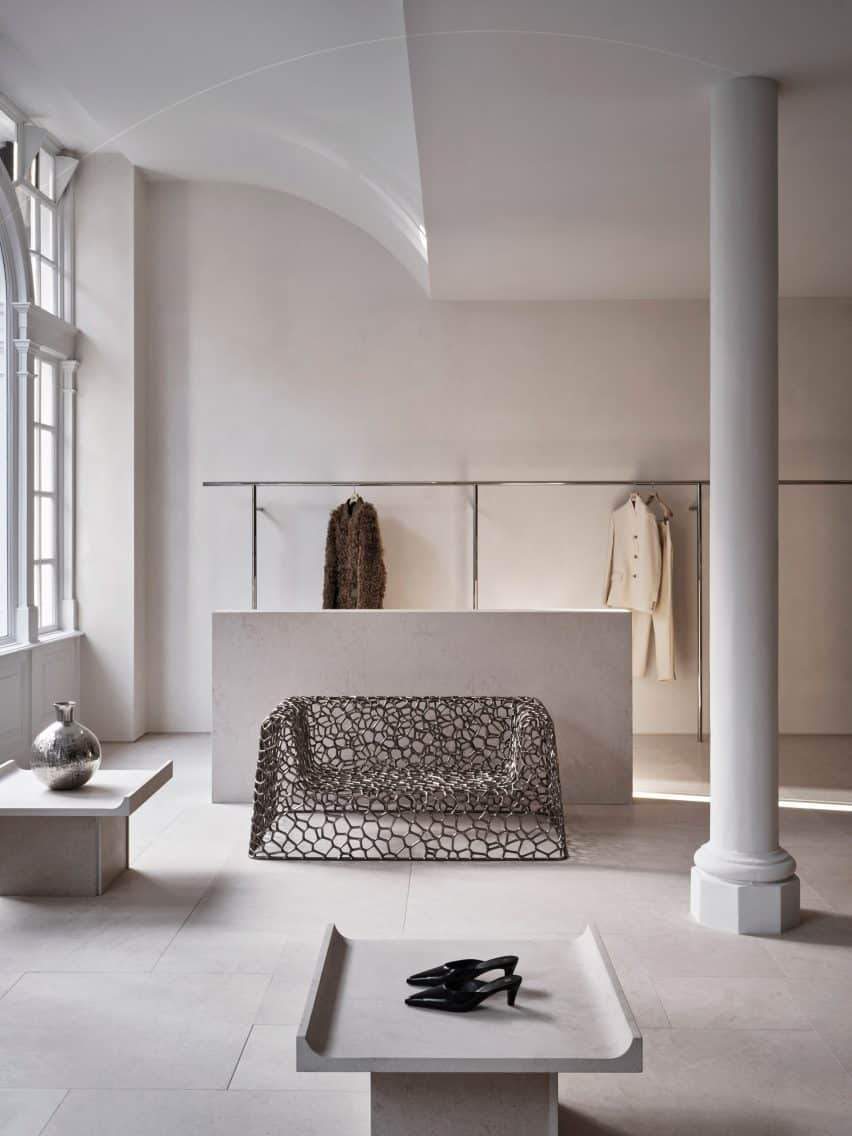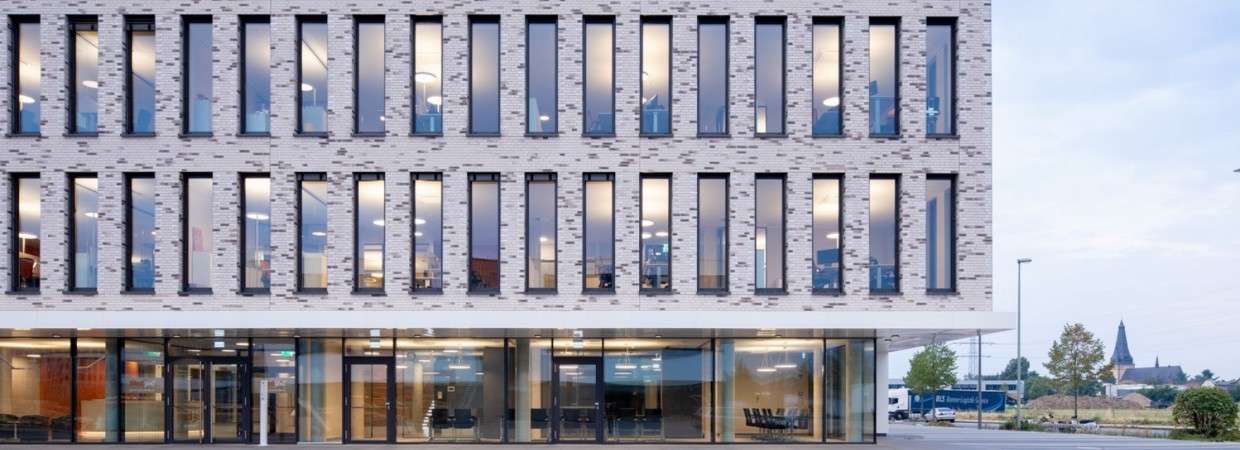The flagship store of fashion brand Toteme in London, designed by Halleroed studio from Stockholm, showcases a sculpture by artist Carl Milles and a steel sofa created by designer Marc Newson. Both designers have been previously featured on Dezeen.
The store on Mount Street in the prestigious Mayfair district was created by Halleroed in collaboration with Toteme founders Elin Kling and Karl Lindman. With the aim of showcasing the brand’s history, the duo designed their third flagship store.
During the store’s launch event, Lindman expressed their interest in incorporating elements from their Swedish heritage into their concept.
According to the speaker, the idea of Scandinavian or Swedish design can be elevated either through incorporating specific vintage items or through collaborations, such as the one in the brand’s Mercer Street store in New York with Svenskt Tenn.
Halleroed utilized the physical area as inspiration for the interior design, with a primary emphasis on the impact of natural lighting.
According to Ruxandra Halleroed, co-founder of Halleored, the design of the space, with its stunning original windows that allow natural light to enter, served as our inspiration, as shared with Dezeen.
Unfortunately, the top section of the windows were not fully visible, so we made the decision to modify the ceiling by creating a half vault towards the front. This allowed for the entire height of the windows to be showcased.
The design is also inspired by the architectural style of Italian architect Carlo Scarpa, as well as the Swedish Grace movement.
According to Christian Halleroed, co-founder of Halleroed, the design of Toteme as a brand was heavily influenced by the elegant and simplistic style of the Swedish Grace period, which took place in the 1920s and 1930s. This inspiration was evident in their work, as seen by Halleroed’s statement to Dezeen.
We find the work of Carlo Scarpa to be intriguing, particularly in terms of his approach to incorporating details and textures to achieve a refined sense of sophistication and opulence.
The designers, Kling and Lindman, aimed to maintain the luxurious atmosphere of Mount Street, where the store is situated, while simultaneously emphasizing the minimalist aesthetics of the space.
A significant amount of work was invested in the selection of colors and diverse materials with varying textures for the flagship store. This was done in order to achieve the desired result.
According to Ruxandra Halleroed, our team utilized varying shades and textures within an off-white color scheme.
The textures hold equal importance to the color and materials used. Our walls feature a glossy, off-white stucco, while the ceiling is painted in the same color but with a matte finish. As for the flooring, it consists of a honed limestone in beige, with a pattern known as Opus.
Halleroed designed a stone-covered cube within the Toteme store which contains shelves, showcases, and alcoves filled with various artworks.
According to Christian Halleroed, the central volume is covered in limestone with three varying textures: honed, bush hammered, and spiked. These textures are paired with oxidised dark brass.
The back of the store is adorned with a square structure, crafted from glossy stucco and finished with a dark brass material.
In contrast to the simple interior design, the store is adorned with various artworks, such as a sculpture by Milles and a intricately crafted steel Random Pak Twin sofa by Newson. Lindman discovered the sofa online.
Kling informed Dezeen that he is under the control of auction houses.
According to her, he discovered the piece and sent it to her, which she greatly enjoyed. Additionally, they have a Marc Newsom artwork present in each of their stores. Consequently, they decided that the Mount Street store would be the perfect location for this particular piece. However, at the time, they only had the signed contract and nothing else.
The Toteme store’s gypsum Milles sculpture was chosen by the two founders and Halleroed, who also collaborated on a custom niche design. The niche, constructed out of black high-gloss stucco, was specifically made to showcase the pale artwork in contrast.
The store was enhanced with vintage Swedish Grace furniture by Halleroed, which featured armchairs and a coffee table designed by Otto Schulz, as well as a daybed and a pewter mirror created for the Stockholm Exhibition 1930.
Finally, find out more on ArchUp:









